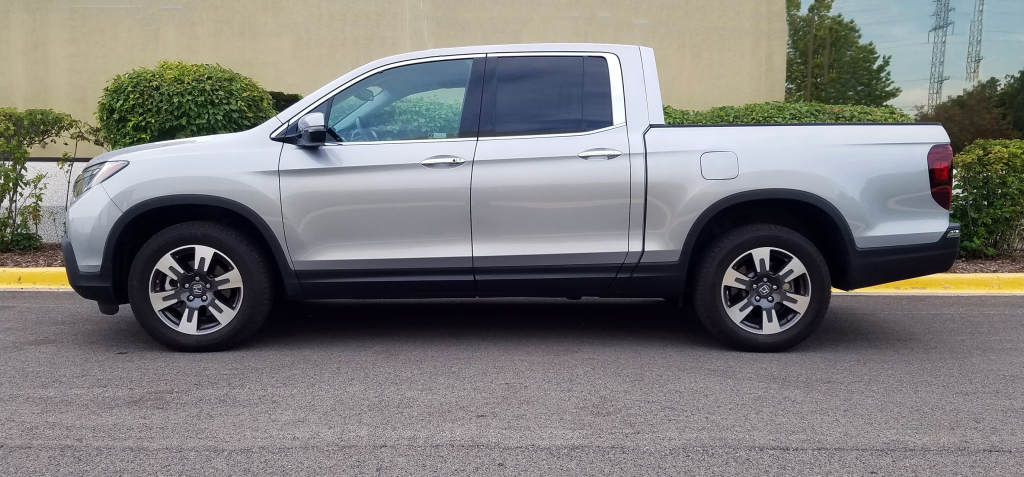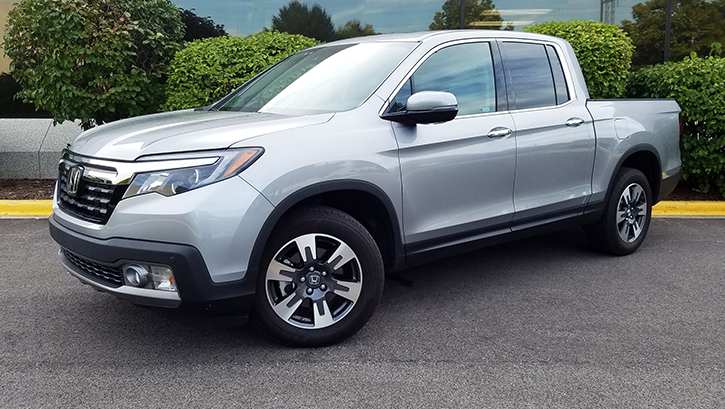
Text by John Biel
2019 Honda Ridgeline AWD RTL-E
Specs
Class: Compact Pickup
Miles driven: 322
Fuel used: 16.1 gallons
| CG Report Card | |
|---|---|
| Room and Comfort | A- |
| Power and Performance | B |
| Fit and Finish | A |
| Fuel Economy | B+ |
| Value | A- |
| Report-card grades are derived from a consensus of test-driver evaluations. All grades are versus other vehicles in the same class. Value grade is for specific trim level evaluated, and may not reflect Consumer Guide's impressions of the entire model lineup. | |
| Big & Tall Comfort | |
| Big Guy | A |
| Tall Guy | B+ |
| Big & Tall comfort ratings are for front seats only. "Big" rating based on male tester weighing approximately 350 pounds, "Tall" rating based on 6'6"-tall male tester. | |
| Drivetrain | |
| Engine Specs | 280-hp 3.5L |
| Engine Type | V6 |
| Transmission | 6-speed automatic |
| Drive Wheels | AWD |
Real-world fuel economy: 20.0 mpg
Driving mix: 50% city, 50% highway
EPA-estimated fuel economy: 18/25/21 (city, highway, combined)
Fuel type: Regular gas
Base price: $41,920 (not including $1045 destination charge)
Options on test vehicle: None
Price as tested: $42,965
Pros and Cons
The great: Ride, handling, refinement
The good: Room and comfort
The not so good: Some control-layout annoyances, not as suited for challenging off-roading as class rivals
More Ridgeline price and availability information
Review
The Honda Ridgeline gets dogged a bit by “real pickup” consumers. They raise an eyebrow at a compact truck with unitized body construction and an independent rear suspension. The more capable of Ridgelines come with all-wheel—not 4-wheel—drive, and the rest have front-wheel drive, would you believe!
Who, then, would want such a thing?
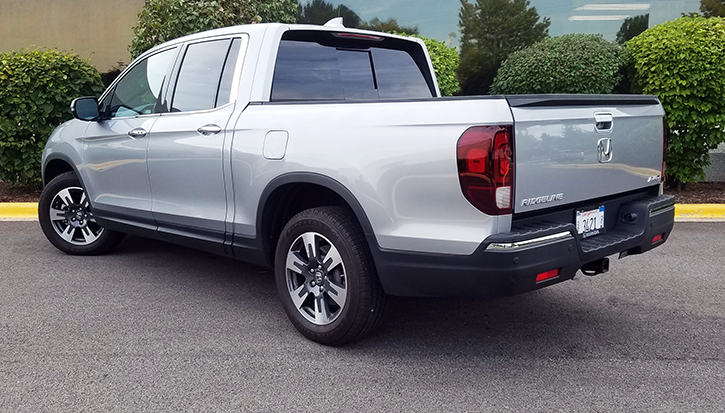
Unibody Architecture
Of course, it was once taken as an article of faith that sport-utility vehicles had to be hardy, high-riding descendants of body-on-frame trucks with large engines and available 4WD drivelines. Then along came the crossover sport-ute to not only blow up that notion but dominate the motor-vehicle market. Measured against that history, maybe there’s room for the crossover pickup—at least one.
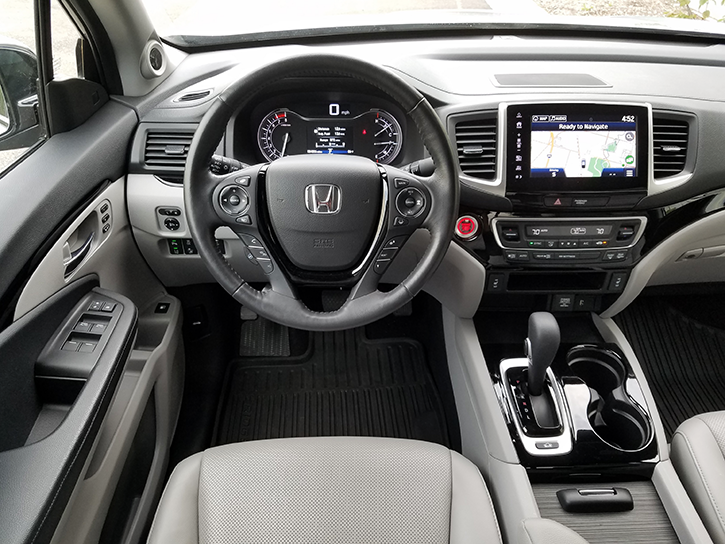
Engines
The second-generation Ridgeline has changed little since it arrived as a 2017 model. It’s offered solely with a full 4-door cab and a 5.3-foot-long bed that holds 33.9 cubic feet of cargo. A 3.5-liter V6 engine driving through a 6-speed automatic transmission is its one powerteam. There was a little thinning of model offerings for 2018, and the ’19s show a few standard-equipment additions to the lower- and mid-trim models. Consumer Guide tried out one of the unchanged models, an RTL-E that sits on the second step from the top of the Ridgeline pyramid. For 2020, the Ridgeline gets a 9-speed automatic transmission in place of the 6-speed, a push-button gear selector instead of a shift lever, and a remote-locking tailgate feature.
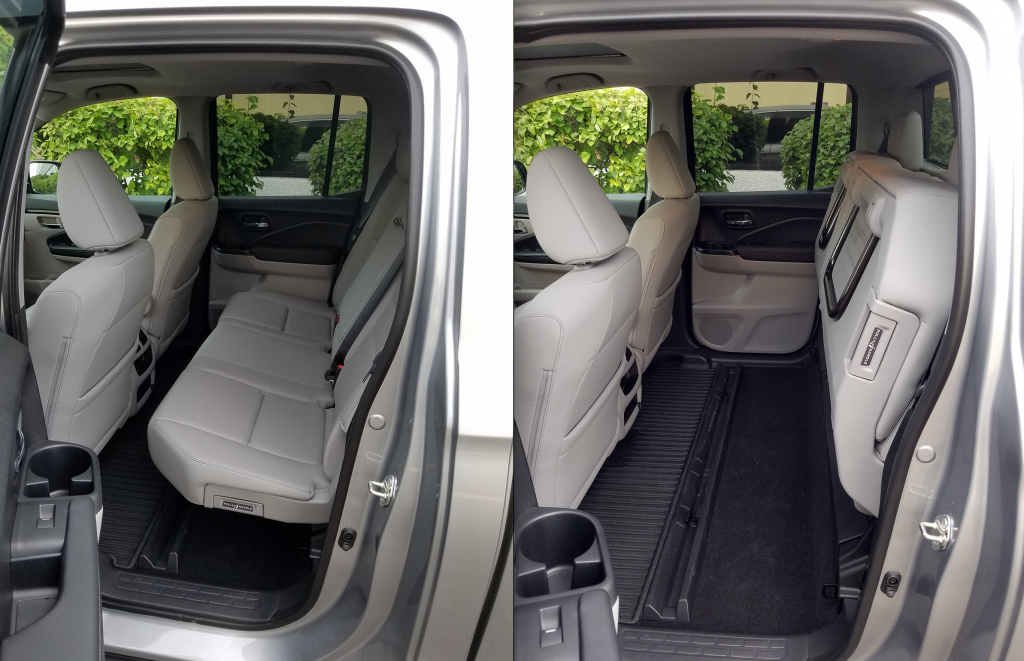
Prices and Equipment
While other models come in a mix of front- and all-wheel drives, the RTL-E and Black Edition are only AWD. With the delivery charge, CG’s Lunar Silver Metallic test truck was priced at $42,965. The remainder of what that buys is pretty extensive. Among the most distinctive items is a pickup bed that’s essentially a giant audio-system speaker, with a half-dozen “exciters” built into the bed walls to get the party started. Other exterior items include 18-inch alloy wheels with 245/60R18 all-season tires, automatic-high-beam LED headlights, heated memory side mirrors, fog lights, a tailgate that lowers in either the usual drop-down manner or opens like a door with hinges on the left, and an integrated Class III trailer hitch.

Cabin and Connectivity
The RTL-E interior drapes leather over the seating surfaces and the rim of the steering wheel. The front seats and steering wheel are heated. Other items of note are a moonroof, power sliding rear window, 10-way power-adjustable memory driver’s seat, 4-way power front-passenger’s seat, tilt/telescoping steering column, tri-zone climate-control system, and 8-speaker premium audio with navigation. The audio rig includes HD and satellite radio, and Apple CarPlay/Android Auto functionality.
Safety and Driver Assistance
Topping it all off is a full complement of convenience and safety tech. Drivers and passengers enjoy HondaLink remote services, Bluetooth hands-free phone connection, remote engine start, push-button starting, and front and rear parking sensors. Safety enhancements are blind-spot information and a cross-traffic monitor, plus the Honda Sensing suite with collision-mitigation braking, road-departure mitigation, forward-collision warning, lane-departure warning, lane-keeping assist, and adaptive cruise control.
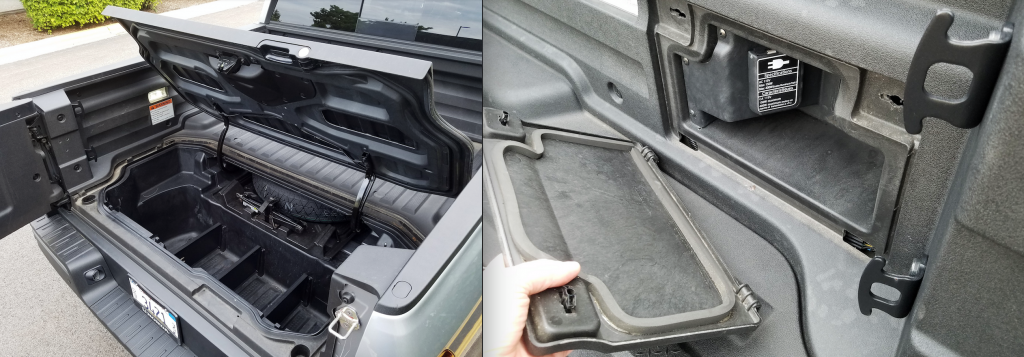
Power and Performance
The 280-horsepower V6 is a commendably smooth, quiet, and responsive engine. It is well matched with the transmission, which kicks down alertly when quick acceleration is called for. An “Econ” mode modifies powertrain performance for drivers trying to run more economically. EPA fuel-economy estimates are 18 mpg in city driving, 25 mpg on the highway, and 21 combined. This driver averaged 21.0 mpg at the end of a 115-mile stint with 55 percent city-type use.
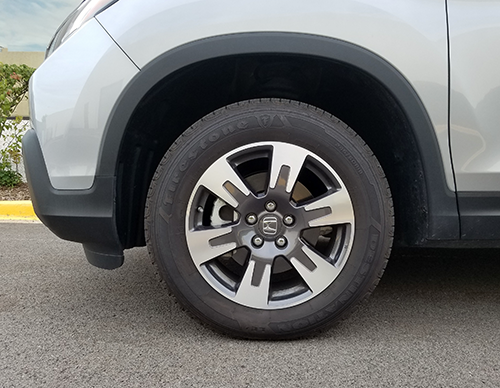
Ride and Handling
Ride quality and handling are about as carlike as you’ll find in a pickup, with excellent control of rear-end hop, steering that is direct and responsive, and good brakes. The tradeoff for this ease and comfort is a limit on the amount of “truck work” a Ridgeline can do. For instance, towing capacities are 3500 pounds for front-drive models and 5000 pounds with all-wheel drive, but those levels are notably less than what class competitors with purebred truck pedigrees can pull. At least the pickup bed is wide enough between the wheel houses to easily make room for 4-foot-wide plywood sheets, and a unique underfloor trunk at the back of the bed can serve a number of purposes—including as an 82-quart cooler.
Room and Comfort
Interior space makes the Ridgeline a practical people-hauler. There’s ample headroom in both rows. Legroom is very good in front, and it’s not bad for adults in the second row. Speaking of adults, this driver ferried three grown-ups who simultaneously occupied the rear seat. Rear seat backs are somewhat upright and not as padded as those in front, but there’s nothing particularly unpleasant about them, and rear door panels don’t have as much soft-touch material on them. Rear doors don’t swing open as wide as the front ones, a possible complication for entry and exit (note, however, that Honda says the ’20 Ridgeline has rear doors that open wider). Step-in height isn’t especially challenging, and driver vision is good around the cabin.
Controls
Electronic driving gauges and vehicle information are clearly shown in a “barbell” display. An 8-inch screen serves the various infotainment functions. The audio system has an intuitive layout that makes it easy to program presents—though it lacks the physical tuning knob found on some other current Hondas. The navigation system is efficient in accepting destination info via the touchscreen, and it gives timely audial instructions. Unfortunately, the climate system isn’t as easy to use. It has repetitive-action toggle switches to select temperature and an array of buttons for other functions.
Storage
Cabin storage space is excellent. The ample glove box and a cavernous console box are good places to start. Two levels of bins are found in the front doors—the lower one being the more voluminous—and pouches are attached to the backs of the front seats. Cup holders for front passengers are in the console, while rear-seat occupants can stash drinks in either the pull-down center armrest or in individual holders molded into the door panels.
Value
The compact-pickup field is experiencing a rebirth after years of decline. New nameplates have popped up—Ford Ranger, 2020 Jeep Gladiator—just in the few years since the current-generation Honda came out. There’s plenty of choice for the “real pickup” shopper. For anybody else thinking about a light truck, there’s the Ridgeline.
